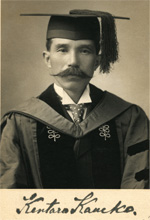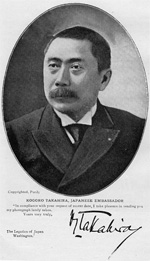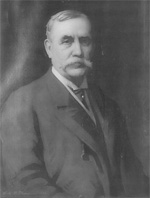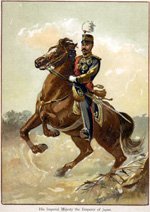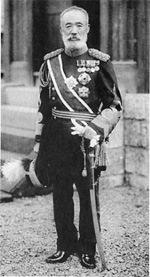 PEOPLE
PEOPLE

People, Part Two: Japan
Takahira
Minister Takahira, was second in command of the delegation, and was its public face in the community. He played a role in the discussions, often met privately with the Russians to arrange meetings and to work out other details, and participated in informal gatherings with the hosts.
Kaneko
Kentaro Kaneko was one of the first two Japanese students to enroll at Harvard. He graduated from the law school in 1874 and was a classmate of Theodore Roosevelt, although they never met at that time. Kaneko was the primary author of the Meiji Constitution. Because of his college ties with Roosevelt, he was sent to Washington at the outbreak of the war to develop pro-Japanese support and to foster Roosevelt’s effort to persuade Russians to negotiate for peace. During the negotiations, Kaneko continued to meet with the president and to influence back channel diplomatic efforts.
Denison
Henry W. Denison was sent to Japan in 1870 as vice consul to the American consulate, but soon after the Japanese government appointed him as legal advisor to the Ministry of Foreign Affairs, a position he held for thirty-three years. A native of Lancaster, New Hampshire, he was a member of the Japanese delegation at Portsmouth and prepared the final draft of the treaty, along with Theodore de Martins, his Russian counterpart. Denison also drafted the Japanese government’s positions for the 1894 Sino-Japanese Treaty and the 1902 Anglo-Japanese Alliance agreement.
Emperor Meiji
Prince Mutsuhito became emperor in 1868 at the age of 15. His coronation as the 122nd Emperor of Japan began the national revolution known as the Meiji (enlightened government) Restoration that ended the Tokugawa shogunate, unified the government, and transformed the country into a westernized industrial and military power. The emperor became more of a revered figurehead than a political leader and he left the affairs of state to the elder statesmen and military leaders, unlike the Russian tsar who took command both of the war and the peace negotiations. Emperor Meiji remained at the palace during the war and followed reports from the battlefronts. At one point, the imperial chamberlain reported the Emperor expressed concern about the siege of Port Arthur. The Emperor observed: “Nogi’s a good general but the way he kills soldiers is really upsetting.” One of the Japanese heroes of the war, General Maresuke Nogi had attacked Port Arthur at great cost. Tens of thousands lost their lives, including two of Nogi’s sons.
After the war, Nogi wrote a poem that expressed shame over “a mountain of corpses.” It was in the nature of an apology to the Emperor for the price paid for victory, the loss of so many of His Majesty’s “children.” When they learned of the death of Emperor Meiji, both General Nogi and his wife committed suicide. He was re-enacting the ancient samurai rite of following his master to the grave. Nogi’s act also reflected a reverence for Japan’s ancient traditions symbolized in the Emperor.

